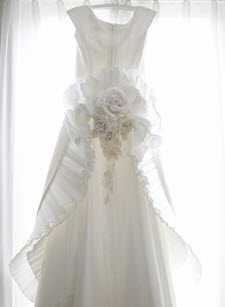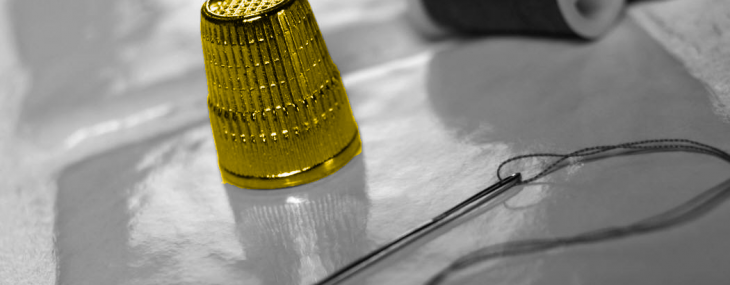It’s been a whirlwind of activity here at Mary’s Sew and So! The prom and graduation rush is barely over and now we’re heading into wedding season. Bridesmaids’ dresses are coming through the door almost daily for fittings!
I want to give you an important tip when doing alterations on long dresses of every kind. This applies to wedding gowns, bridesmaids dresses, prom dresses and such. In fact, any length dress might need this alteration technique used to make sure it fits properly and to the client’s satisfaction.
Sir Isaac Newton on dress alterations
When an apple fell out of a tree and hit him on the head, Sir Isaac Newton – 17th century English physicist and mathematician – formed his theory of gravity.
But his third law of motion states:
For every action, there is an equal and opposite reaction
Dressmaking and alterations have not been the same since.
When you are making adjustments to a dress – long or short – keep in mind that a pull in one location also creates a pull at another.
For example, shortening the straps at the top of the dress is going to affect the length of the hem at the bottom. And it may also make a difference in the waistline.
One alteration – Two fittings

Complex alterations require at least two fittings.
Many alteration shops only do one fitting for the entire job. That’s fine if you are doing a simple job, like hemming the bottom of a dress.
But when doing a top-to-bottom alteration, I always do it in at least two fittings. This is important because I want my client to be absolutely thrilled with the results. Their satisfaction is so important to me that the second fitting is not “extra,” but is included as an expected part of the alteration process.
I always start with fitting the top of the garment first. Adjustments to shoulders, shoulder straps and even the bust line will affect the overall length of the dress.
So the first fitting is made from the waistline up.
Once those alterations are done, I bring in the client for a second fitting. After making sure that the top alterations are perfect, we concentrate on the bottom half of the dress. We’ll mark the hemline where the client wants it (don’t forget to bring the shoes you’re going to wear if it’s a floor-length dress).
This is essential on long dresses with single and multiple layers; it is also important with short dresses. If the client wants the hemline to lay at a specific height, two fittings will ensure this happens.
It’s your dress – make sure it fits you!
I use two fittings for one, very important reason. It’s your dress and it must be fitted to your satisfaction, not mine. I’m not wearing it. You are.
If you don’t love it, neither do I.
Finally, I always ask the client to try it on one more time when picking any garment up after alterations. That way we can make sure everything is functioning and positioned properly.
Look great in your clothes, and
Have a Sew wonderful day!
Mary Maurer
Mary’s Sew and So!

It was amazing that you actually ask the clients to try the fitting twice to make sure that everything is done perfectly. I recently bought a new dress, and I’m planning to use it for my sister’s wedding. That’s the reason it kind of disappointed me when I found out that the clothes are too loose. I think it’s best to find a tailor who will address my needs right away. Thanks a lot!